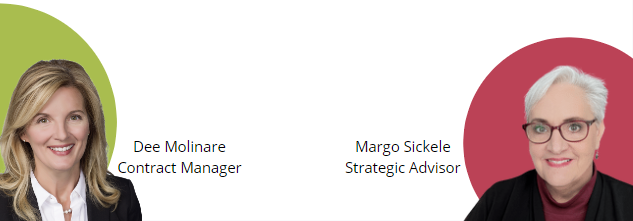Education reform efforts are nearly as old as public education itself. Glance at a timeline of the history of education, and this one of the history of education in the United States more specifically and you see the significant and continuous process of change across decades and centuries. As mentioned in an earlier blog post, the publication of A Nation At Risk in 1983 laid the foundation for the reform efforts of the last 40 years, with varied levels of success, despite significant investments of time and resources. What has remained constant is the fundamental structure of how and why we provide education, and our purpose for education has been clearly updated to reflect what we want and need schools to do now.
In addition, we have slowly added more expectations to our schools, from the inception of public education through today. Since the pandemic, we expect more than ever from our teachers and our schools, including now wrapping intensive social and emotional learning and support into an ever-expanding amount of academic content. See Blog Post #2 for a deeper discussion of the increasing complexity of education and the expansion of teaching and learning content. Combined with the excoriation of public schools and educators, we see people leaving the profession in droves and a stark decrease in the number of students choosing education as a career path in college. This has the potential to cause serious damage to the availability of public education for all students.
Throughout the nation we have expectations that schools will meet the needs of all children in theory; however, pervasive structural and systemic inequities, a lack of collective responsibility for the success of our schools, and financial disparity contribute to an ever-deepening divide in the type of education our children receive.
 Diane Ravich (2020), in Time Magazine, discusses the overall stagnancy of test scores over the last decade or so, even with the massive amounts of “reform” and funding allocated to those reform efforts. She says, “Test scores on the federally funded National Assessment of Educational Progress—known as ‘the Nation’s Report Card’—have been stagnant for the past decade. The scores of the lowest-ranked students declined. On the latest international test, called PISA (Program in International Student Assessment), the scores of American students were unchanged over the past decade. American students have never done well on international tests, but it is clear that the test-and-punish strategies of the past twenty years did not vault U.S. students to ‘the top’.”
Diane Ravich (2020), in Time Magazine, discusses the overall stagnancy of test scores over the last decade or so, even with the massive amounts of “reform” and funding allocated to those reform efforts. She says, “Test scores on the federally funded National Assessment of Educational Progress—known as ‘the Nation’s Report Card’—have been stagnant for the past decade. The scores of the lowest-ranked students declined. On the latest international test, called PISA (Program in International Student Assessment), the scores of American students were unchanged over the past decade. American students have never done well on international tests, but it is clear that the test-and-punish strategies of the past twenty years did not vault U.S. students to ‘the top’.”
Educational reformers often impose solutions for subsets of school-related issues (see Blog Post #1). Race to the Top (RTTT), for example, isolated four key variables solely focused on college and career readiness: standards and the assessments of those standards, data systems to track student progress, effective teachers and leaders, and interventions for the lowest performing schools. States were invited to submit plans for a competition-style bid to receive funding to address these selected variables. To date, the $4 billion invested in this competition reform approach has not been sustained and in some cases created more issues to be addressed. While well-intended and aimed at closing achievement gaps, it was another reminder that school design, community environmental factors, and expected outcomes are critical considerations in what and how we should think about educational reform. Money and a prescribed solution are not closing the gap.
Instead of trying to apply a single predetermined solution to complex systems, it is better served to provide holistic approaches that rest on identifying evidence-based strategies than using a program or material purchases to guide pedagogical actions. Schools and school leaders would benefit more from a set of behaviors and a pathway for improvement that can be utilized in various and evolving contexts. Teacher self-efficacy is maximized when the focus is on understanding and implementing identified practices through a lens of data analysis and student needs. What often is missing from the single solution efforts or fidelity to a program is the individual and collective commitment to action around contextualized solutions- where diverse elements, relationships, and values produce powerful change. Culture change in schools is the hardest to address as we discussed in the last Blog Post. Transformational leaders cause change in individuals and social systems. Each school staff, collectively, needs the motivation, moral purpose, commitment to change, and shared accountability for meeting improvement goals. Real change happens when ownership and accountability meet in the nexus of shared problem definition and solution.
Coherence making is about processes and steps to navigate the ever-evolving complexity. It is about clarity of action, behaviors, and conditions that allow the whole system to change. Change management is a repeatable, adaptable, and structured process for managing change that considers both the technical and human aspects of the work. Coherence and change management are those holistic processes that are never “done” but rather skills educational stakeholders can build proficiency to do well and result in sustainable improvement. In a case study of high capacity systems, one of us (Dunsmore) did with organizational management researcher Catherine Nelson (2017), one of the common elements amongst all systems studied was the commitment to focus on no more than 3 initiatives/change efforts at a time. Most high-capacity systems had just one or two. They then created structures to ensure the initiative was understood, owned, and actively supported across all aspects of the district. Leadership involved each person, each role, and each unit understanding actively how their work supported the change and how their role priorities supported system ones.
that allow the whole system to change. Change management is a repeatable, adaptable, and structured process for managing change that considers both the technical and human aspects of the work. Coherence and change management are those holistic processes that are never “done” but rather skills educational stakeholders can build proficiency to do well and result in sustainable improvement. In a case study of high capacity systems, one of us (Dunsmore) did with organizational management researcher Catherine Nelson (2017), one of the common elements amongst all systems studied was the commitment to focus on no more than 3 initiatives/change efforts at a time. Most high-capacity systems had just one or two. They then created structures to ensure the initiative was understood, owned, and actively supported across all aspects of the district. Leadership involved each person, each role, and each unit understanding actively how their work supported the change and how their role priorities supported system ones.
The Baldrige Performance Excellence Program makes the argument that many of the performance measurement systems used in education focus on student achievement data to the exclusion of measuring things that could truly innovate education for the betterment of students. “While the improvement of student learning must remain at the core of what education systems are about, achievement data alone are not sufficient to drive the types of performance improvements required and do not acknowledge that schools and districts are in fact complex systems.” The Baldrige framework also helps us to attend to educational improvement as a reflection of system conditions and actions. It broadens our view from strategy to the way that actions are embedded in context, norms, routines, and cultures which prioritize and incentivize behavior. It leads us to examine the organizational condition and norms as critical for analysis in any “technical” approach to problem-solving and broadens the list of capacities that need to be attended to as part of a change process.
 The Big Questions Institute has identified the overall lack of coherence we see now; “It’s the sense that all of this, the pandemic, the racial unrest, the looming environmental and economic disasters, all of them are symptoms of the deep incoherence of this moment when it comes to our supposed values and commitments and actions we actually take. Everything today feels like a reaction; nothing feels like an outcome that we collectively have been working toward.” This full lack of coherence has shed an even stronger light on the vast inequities in our school systems. In order to ensure that our public education system, in practice, prepares all students for lifelong learning and life-long success, providing them with the knowledge, tools, mindsets, and skills to be successful, we must begin with acknowledging and then addressing these pervasive inequities collectively. Our conversations should focus not only on how we should make change within our schools, but also how schools fit into the larger system of our communities, our country and our world.
The Big Questions Institute has identified the overall lack of coherence we see now; “It’s the sense that all of this, the pandemic, the racial unrest, the looming environmental and economic disasters, all of them are symptoms of the deep incoherence of this moment when it comes to our supposed values and commitments and actions we actually take. Everything today feels like a reaction; nothing feels like an outcome that we collectively have been working toward.” This full lack of coherence has shed an even stronger light on the vast inequities in our school systems. In order to ensure that our public education system, in practice, prepares all students for lifelong learning and life-long success, providing them with the knowledge, tools, mindsets, and skills to be successful, we must begin with acknowledging and then addressing these pervasive inequities collectively. Our conversations should focus not only on how we should make change within our schools, but also how schools fit into the larger system of our communities, our country and our world.
See CEC’s Core Services on our approach to supporting coherence making in educational settings.
Consider the following:
- Choose Coherence: Resist the temptation to advocate or endorse piecemeal solutions in schools. Rather advocate for coherent change efforts that consist of technical and culture shifts in how schools operate holistically. Always view change as a process of supporting learning, which requires attention both to the cognitive and socio-emotional components of the change process.
- Choose 1!: Select a few high-impact strategies and fully implement them to full sustainability before shifting to the next good idea. High-capacity systems take the time to clarify, monitor, support, provide accountability, and progress monitor and a small number of high-leverage strategies. The design for implementation and build systems that monitor and support success.
- Choose Stakeholder Engagement & Ownership from the onset: Apply or require both systemic and systematic approaches to any improvement effort, ensuring collective impact through shared decision-making and ownership. Effective school transformation efforts allocate resources (money, time, action) toward shifting how people work and not just what they do. This often involves intentional work at the very beginning to build understanding amongst a very diverse set of stakeholders who collectively share a definition of the problem and own the solution and work moving forward.
- Choose Leader Development: When developing a plan for change, consider your entire system, building systemic thinking and coherence into your plan, using proven change leadership strategies. Change efforts often fail because building and district leaders don’t fully understand their role or how to coordinate and prioritize the various tasks on their plate. Any change effort needs to both define as well as monitor and support the key roles and responsibilities of leaders. For example, initiatives that invest vast amounts of resources in providing coaching talent and time to support math or literacy improvement fail if principals don’t understand or use evaluation tools to monitor and bring accountability for change efforts and if there isn’t district clarity and resources to support the nature and focus of change. Effective instructional leadership at a building level requires a level of clarity, coordination, and accountability that must be built into the implementation plan.
- Choose Collaboration: Collaboration is key to the success of large-scale efforts; it is beneficial to work with colleagues from other districts and from professional organizations that can provide support to broaden your thinking as well as identify potential pitfalls and solutions. The growing attention to Network Improvement Community (NIC) designs reflect growing awareness that application of evidence-based solutions requires attention to local context and willingness to adapt and refine through a continual process of inquiry and systematic data collection. Collaboration across units within a system and with other systems supports the kind of reflexive analysis and intentional design that ensures that strategy becomes embedded into the system context and conditions.

